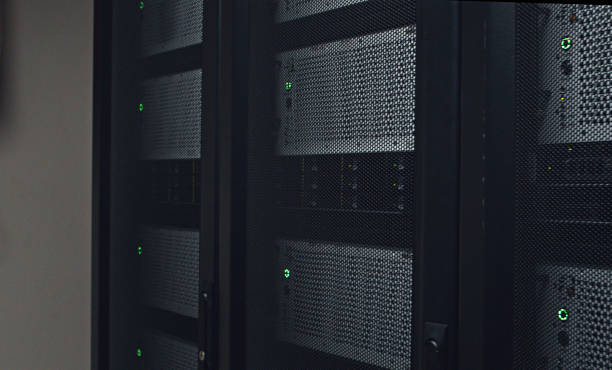Growing data volumes are rapidly shifting workloads to high-density data centers. This, however, creates a data-handling challenge. Sensitivity equipment can be damaged, performance can drop, and expensive downtime can occur if thermal buildup is not properly managed. Advanced enclosure cooling solutions step in right about now. This article looks at the evolution of rack cooling technologies and the advanced enclosure cooling solutions that redefine efficient, reliable, and scalable data centers.
Understanding the Heat Challenge in High-Density Racks
Traditional data center cooling systems are struggling to keep pace with ever-evolving high-density IT ecosystems. The tight packing of servers, switches, and other components creates super concentrated heat loads which legacy air conditioning and room cooling systems cannot efficiently handle.
The industry is leaning towards enclosure cooling solutions like rear-door heat exchangers, in-rack liquid cooling, and high-performance fan based systems. These systems work to cool the air as close to the heat source as possible, thereby improving energy efficiency and reducing thermal stress.
Categories of Cooling Technologies for Racks
For decades, methods of temperature management within server enclosures have scaled with the development of high-density environments. The following are the primary types of rack cooling technologies that either have emerged or are under development:
Passive Cooling Technology
This method incorporates no active power expenditures and generally makes use of ventilation panels and smart cabinet designs. This method is easy to maintain, however, it is only effective for low to moderate power density environments.
Active Air Cooling Technology
Active air-based solutions include high CFM fans, directed airflow pathways, and hot/cold aisle containment strategies. These systems offer more accuracy when it comes to airflow control and also help in the management of consistent thermal equilibrium even in high density scenarios.
Thermal control without the rise in operational expenses is now achievable with Enclosure cooling solutions that make use of intelligent fan placement and sensor-based circulation of air in enterprise data centers.
Liquid Cooling Technology
The sealing off of other areas is beneficial to control other areas such as air conduit and heating chevrons. These steps allow for more superlative airflow when dealing with higher condensed environments. Liquid cooling is efficient for ultra-dense environments. This technique facilitates the direct removal of heat from the server components via cold plates or immersion cooling fluids. Despite its exceptional cooling efficiency requiring extremely tough installation and maintenance, this is still superior when dealing with complexity.
Rear-Door Heat Exchangers
Heat is absorbed and removed using chilled water or refrigerants by these exchangers mounted right at the back of the rack. Rear-door cooling systems showcase tremendous potential for retrofitting existing setups as demand for compact solutions grows, all while bypassing the need for full infrastructure overhauls.
Innovations in Enclosure Cooling Solutions
In recent years, the market has seen quite a few developments that are novel in the realm of enclosure cooling solutions:
- Smart Sensors and AI Integration: Thermal sensors combined with AI are now adjusting the amount of airflow based on the specific requirements, optimizing fan speeds and cooling in real time.
- EC Fans and Variable Speed Controls: Airflow management has been improved by EC fans with variable speed capability which deliver coolant precisely when and where it is needed.
- Modular Design: These cooling units can be easily scaled to match increasing server demands which makes them perfect for expanding data centers.
These developments address the gap between the increasing heat loads operational assets generate and sustainability targets data centers are aiming for by providing high efficiency, greener options without compromising performance.
Advantages of Enhanced Rack Cooling within B2B Infrastructure
Implementing advanced rack cooling technologies comes with a number of distinct benefits for data centers and IT-centric B2B businesses:
- Reduced Energy Costs: Advanced rack cooling systems, effectively reducing the energy consumed to maintain a required equilibrium, simultaneously lower utility expenses.
- Operational Reliability: Adequate cooling mitigates expensive business interruptions due to unplanned shutdowns and prolongs the operational lifespan of pivotal hardware.
- Scalability: Modular and adaptive cooling systems ensure infrastructure can scale with increasing business demands without overheating concerns.
- Decreased Downtime: Consistent service delivery is facilitated through the efficient enclosure cooling solutions that reduce thermal-related interruptions and failures.
Cooling strategies, whether for edge computing nodes or big centralized data centers, greatly influence uptime and system integrity.
Assessing the Right Cooling System for Your Racks
Cooling strategy selection hinges on several considerations:
- Power Density: High densities might necessitate liquid or rear-door cooling while advanced fan systems can serve lower densities.
- Space Restrictions: In spaces with limited real estate, in-rack or enclosed cooling solutions that do not rely on room-sized AC systems are advantageous.
- Eco-Friendly Targets: Companies with sustainability goals tend to favor EC fan-based or free-air cooling technologies.
- Budget: “Cost of air-based methods require forethought alongside implementation and long-term maintenance in liquid-based techniquesROI.”
Interdisciplinary teamwork is paramount for a successful implementation. IT managers, facility engineers, and system integrators need to collaborate on designing the solution to achieve the performance and operational objectives.
Conclusion
Data centers need to advance their thermal management innovation in the face of rising computing demands and the continuous expansion of high-density environments. Innovative rack cooling techniques are paramount for ongoing developments. Active systems with AI-controlled airflow and advanced liquid cooling integrating energy flexibility enable enterprises to effectively manage the ever-evolving requirements through enclosure cooling solution innovations.
As a B2B decision-maker, adopting these intelligent technologies improves reliability and strengthens the company’s position as a leading IT operations business.

